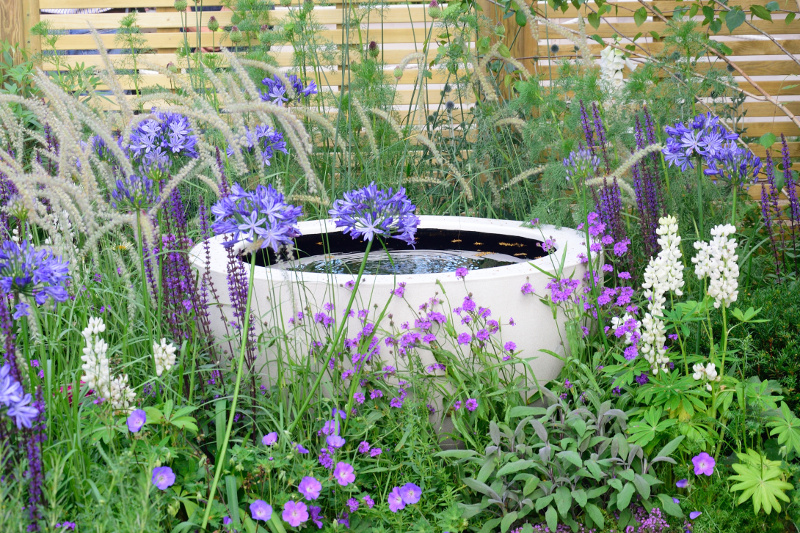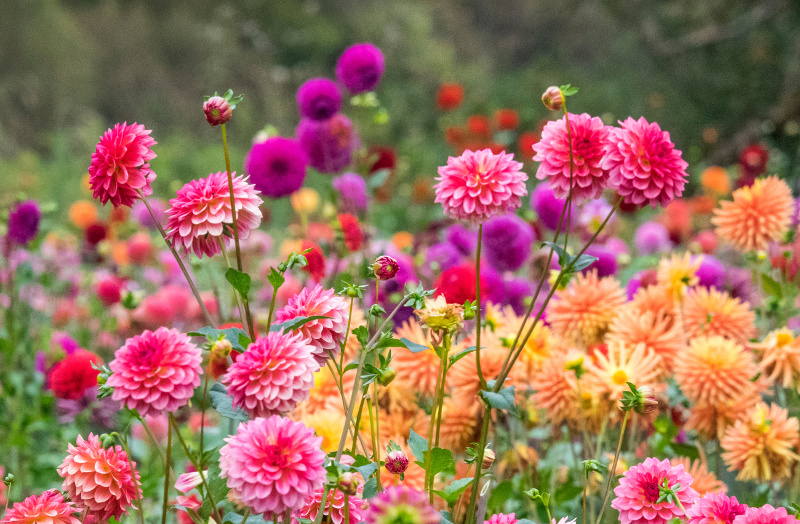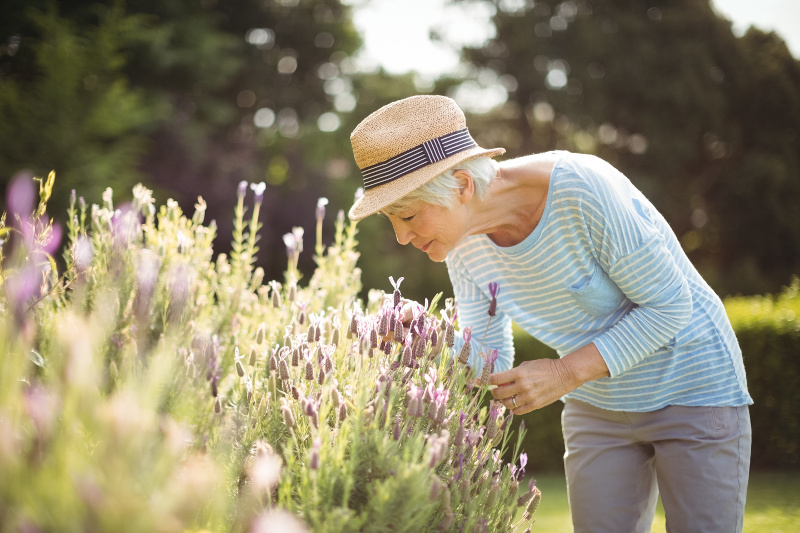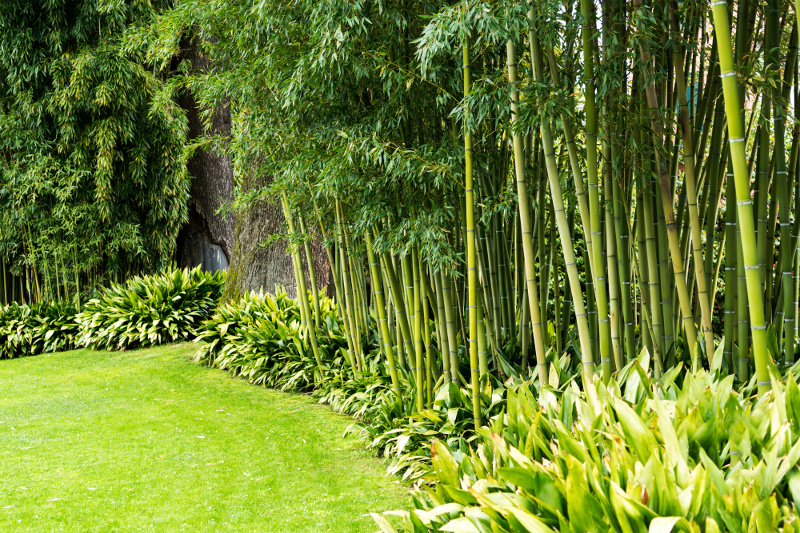Gardens have long been a place of solace and rejuvenation, providing a connection to nature that soothes the soul. But what if you could take how you experience your garden to the next level by creating a sensory garden?
Sensory gardens combine features, plants, surfaces and objects to stimulate all 5 of our senses – touch, sight, scent, sound and taste. In doing so they create a therapeutic space for recuperation and relaxation by encouraging engagement and interaction with nature.
Here we explore the benefits of a sensory garden and how to go about creating one of your own.
The benefits of a sensory garden
Spending time in a multisensory garden has been found to provide numerous benefits.
- They offer a calming environment that promotes relaxation, reduces stress and anxiety.
- Their sensory experiences and stimulation can help those with sensory processing disorders or who are seeking sensory therapy.
- Cognitive function is enhanced by encouraging individuals to explore and engage with their surroundings. This helps to improve memory, attention, and problem-solving skills.
- Physically getting around the garden benefits people of all abilities, helping to improve mobility, balance and overall fitness.
- Therapeutic settings like hospitals often use sensory gardens to support physical and emotional healing, as well as assisting in pain management and the recovery process.
- They can help promote social interaction and community engagement by serving as gathering spaces for group activities, or simply as places for friends and family to connect.
- Sensory gardens offer excellent educational opportunities for all ages as they teach people about science and biology, horticulture and the environment.
- They bring people closer to nature allowing them to appreciate the beauty and diversity of plants and animals, helping to foster a greater sense of environmental responsibility.
- Overall well-being is improved through relaxation, physical activity and the simple joy of connecting with nature as someone engages with a sensory garden.
- When designed with inclusivity in mind, sensory gardens can ensure that individuals with disabilities can fully participate and enjoy the outdoor space.
How to create a sensory garden
Whether you own a large plot, a small balcony or bijou backyard, before doing any planting, first think about how you want to layout your sensory garden.
You might want to segment your garden into individual areas dedicated to each sense. Or create a multisensory mix to stimulate all senses at the same time. Your decision is likely to be based on how you’d like people to journey around the space and experience the garden as a whole.
Once you’ve decided on your approach, you can then start creating a garden that is a feast for all the senses.
Sight
The first and most obvious sensory element is sight. Colourful flowers are a must-have in a sensory garden. Consider planting vibrant species like tulips, daffodils and roses to create a visual feast. The Dahlia ‘Bishop of Llandaff’ with its deep red blooms or the Allium ‘Globemaster’ with its striking purple globes are excellent choices.
Integrate attractive foliage with a variety of textures and shapes. Use plants like Hostas, Japanese Maples, and Heuchera whose interesting leaves add depth and interest to any garden.
Ornamental grasses will add structure and movement. Whereas tropical looking palms and plants with big bold leaves add a touch of drama.
Smell
The scent of blooming flowers can transport you to another world. Include fragrant species like lavender, roses, honeysuckle and jasmine. For a truly aromatic experience, consider planting a bed of lavender with varieties like Lavandula angustifolia ‘Munstead’ and ‘Hidcote’.
In a sensory garden, herbs are not only useful for culinary purposes but also emit delightful fragrances. One of the greatest pleasures of having a herb garden is to gently crush the leaves to enjoy their individual scents.
Try mixing familiar favourites with a few new herbs to create an aromatic experience. A few that taste as delicious as they smell include rosemary, thyme, mint, basil, lemon balm, lemon verbena, dill and fennel.
Touch
To engage your sense of touch, incorporate soft ground cover like moss or lamb’s ears. Or the delicate foliage of grasses like Carex. These plants are a pleasure to run your fingers through and provide a sensory contrast to the surrounding landscape.
Tree bark is another wonderfully stimulating texture. From the smooth peeling bark of birches to the craggy nooks and crannies of old oaks and the scales of pines and spruce.
Touch can also be stimulated through hard landscaping. Use large rocks and boulders strategically placed to add visual interest and provide tactile sensations. A flat, smooth rock can make an excellent spot for meditation or relaxation.
Adding a water features also allows someone to dip their hands into a cooling pool or feel the sensation of water flowing over their hands from a fountain.
Taste
The taste component of a sensory garden can be equally enticing. Growing fruit, vegetables and herbs not only add unique flavours but also attract pollinators.
For a multisensory experience try interweaving colourful chards and fragrant herbs into your flower borders and pots. Or create a fruit patch with strawberries, raspberries and blueberries where people can pick and savour the flavour as they explore the rest of the garden.
Fruit trees like apple, cherry, or pear can be included to offer a delightful harvest during the season. There’s nothing quite like plucking a ripe fruit from a tree you’ve nurtured.
Sound
Creating contrasting sounds in a garden helps with tuning into nature and focusing on your immediate surroundings.
Hang wind chimes strategically around the garden to create soft, tinkling melodies when the breeze rustles through the branches.
The sound of running water can be incredibly calming. Incorporate a small pond or fountain to introduce the soothing sound of trickling water into your sensory garden.
Plant trees, bamboo and grasses and notice how the variety of plant foliage makes different sounds as the wind gently breezes through their leaves.
Incorporate wildlife friendly flowers to attract bees and pollinators whose sound of gentle buzzing will delight your ears during the summer months.
Encourage birds with feeders and a water bath to benefit from the beauty of their lilting song accompanying you while enjoying your garden.
Experiment with adding different paving materials such as crunchy gravel to add to the soundscape of your garden as you journey around.
A sensory garden is a sanctuary for the senses, where the beauty of nature can be experienced in a holistic way.
So whether you have a small space or a sprawling landscape, creating a sensory garden is a fulfilling project that can transform your outdoor space into a place of solace, rejuvenation, and connection to the natural world.







